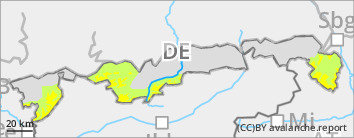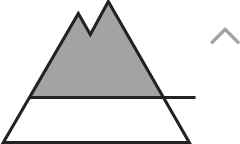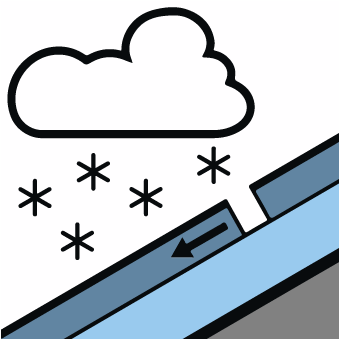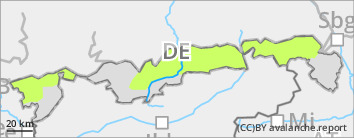
Danger level
 | 1800m |
|  |
|  |

Snowfall will continue
Avalanche danger is moderate above 1800 m; below that altitude it is low. Main problem: new snow. Small loose snow avalanches can trigger naturally in steep rocky terrain in all aspects. The frequency of avalanche prone locations increases with ascending altitude. In a few wind-exposed locations small slab avalanches can be triggered by a single winter sports enthusiast. Possibility of smaller glide-snow avalanches on steep slopes over smooth ground.
Snowpack
Widespread 20cm of new snow, in the Allgäu at highest altitudes in the Allgau up to half a meter of new snow, deposited atop a stable old snowpack; accompanied by fog and zero-degree temperatures a breakable crust has formed. Inside the fresh snow masses there are weak intermediate layers of graupel. At higher altitudes, ridgeline snow is bonded like a slab. The snowpack basis is wet over far-reaching areas.
Tendency
Precipitation will taper off and avalanche danger slowly recede amidst stable high-pressure front weather conditions.



